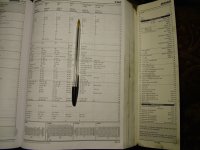rosssavage
Member
Hi folks, newbie 1st post.. Working on a friends Doblo with the 1.4 8v engine (350A1000). Cyl head gasket gave up and dumped coolant into #1, and almost no compression #3 (50psi or so). Looking at the head, there is damage to the #1 intake valve too, so we've gone for a used replacement head.
The new head has a low spot at the #4 end, measured at 0.06mm.
Does anyone know the maximum distortion limit please? It seems generically an ali head should be within 0.05mm (D'oh!) but I wonder what the specifics are for this head? Be a real shame to have to take it to the island's only machine shop for the sake of 0.01mm (we live on Corfu)....
The new head has a low spot at the #4 end, measured at 0.06mm.
Does anyone know the maximum distortion limit please? It seems generically an ali head should be within 0.05mm (D'oh!) but I wonder what the specifics are for this head? Be a real shame to have to take it to the island's only machine shop for the sake of 0.01mm (we live on Corfu)....



